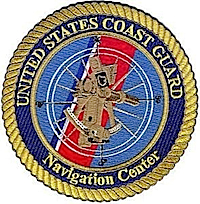Q: Will the new L2C signals be able to be tracked by existing L2-capable (civilian) receivers?
Q: Will the new L2C signals be able to be tracked by existing L2-capable (civilian) receivers?
A: The new civil signals being broadcast on the GPS L2 frequency from the latest GPS Block IIR-M and IIF satellites are significantly different from the existing P/Y codes modulated on the same frequency by the older Block II GPS satellites. The existing P (or the encrypted P/Y) signal is a 10.023 Mbps (million bits per second) binary code that is seven days in length. In other words, the P/Y code symbol pattern repeats every week. The new L2C signal is a 1.023Mbps signal that is composed of two sub-codes time-multiplexed together.
The first of the L2C sub-codes, the L2 civil-moderate (L2C-M), is 20 milliseconds in length generated at 511.5 kbps. The second, the L2 civil-long (L2-C-L), is 1.5 seconds in length generated at the same chipping rate of 511.5 kbps. These two codes are then time-multiplexed together. The C codes are modulated onto the quadrature (Q) component of the RF output signal 90 degrees out of phase of the in-phase (I) signal where the P/Y code is modulated.
(For the rest of Pat Fenton’s answer to this question, please download the complete article using the PDF link above.)
Q: Why was a leap second introduced to Coordinated Universal Time (UTC) on December 31, 2005?
A: On December 31, 2005, the International Bureau of Weights and Measures (BIPM) inserted a leap second into Coordinated Universal Time (UTC) in order to comply with the internationally accepted definition of UTC. The International Earth Rotation and Reference System Service (IERS) is responsible for making the decision to insert a leap second into UTC based on astronomical observations of the Earth’s rotation with respect to distant quasars made using very long baseline radio interferometry techniques. This definition follows Recommendation ITU-R TF.460-5 of the International Telecommunications Union Radiocommunications Sector (ITU-R), which specifies that the difference between UTC and the astronomically observed version of Universal Time called UT1 does not exceed 0.9 seconds. It further recommends that the preferred time to insert the leap second is at 23h 59m 59s UTC on either 31 December or 30 June.
This definition has been in place since its first implementation in 1972 in accordance with a recommendation of the ITU-R predecessor organization, the International Radio Consultative Committee (CCIR).
(For the rest of Dennis McCarthy’s answer to this question, please download the complete article using the PDF link above.)
Q: Will GPS and Galileo have the same or interoperable reference systems?
A: The short answer to this question is ‘YES’, in that both Galileo and GPS shall use as a basis for their reference system definitions, those used by the International Terrestrial Reference System (ITRS).
However, this unfortunately does not end the issue because, whilst the definition of the reference systems is the same for both GNSS systems, their realizations into reference frames shall take place individually for Galileo and GPS in order to guarantee system independence. By making two such realizations, which result in the creation of the Galileo Terrestrial Reference Frame (GTRF) for Galileo and the World Geodetic System 1984 (WGS-84) for GPS, some small discrepancies shall be introduced between them, and this cannot be avoided. If one looks, however, at the requirements for Galileo, it can be seen that the difference between the GTRF and the latest realization of the ITRS shall be kept to within three centimeters (2 sigma). Although I am not aware of an equivalent requirement for WGS-84, if we look at the differences that currently exist between this frame and the ITRF, they also are in the order of two to three centimeters.
(For the rest of John Swann’s answer to this question, please download the complete article using the PDF link above.)





